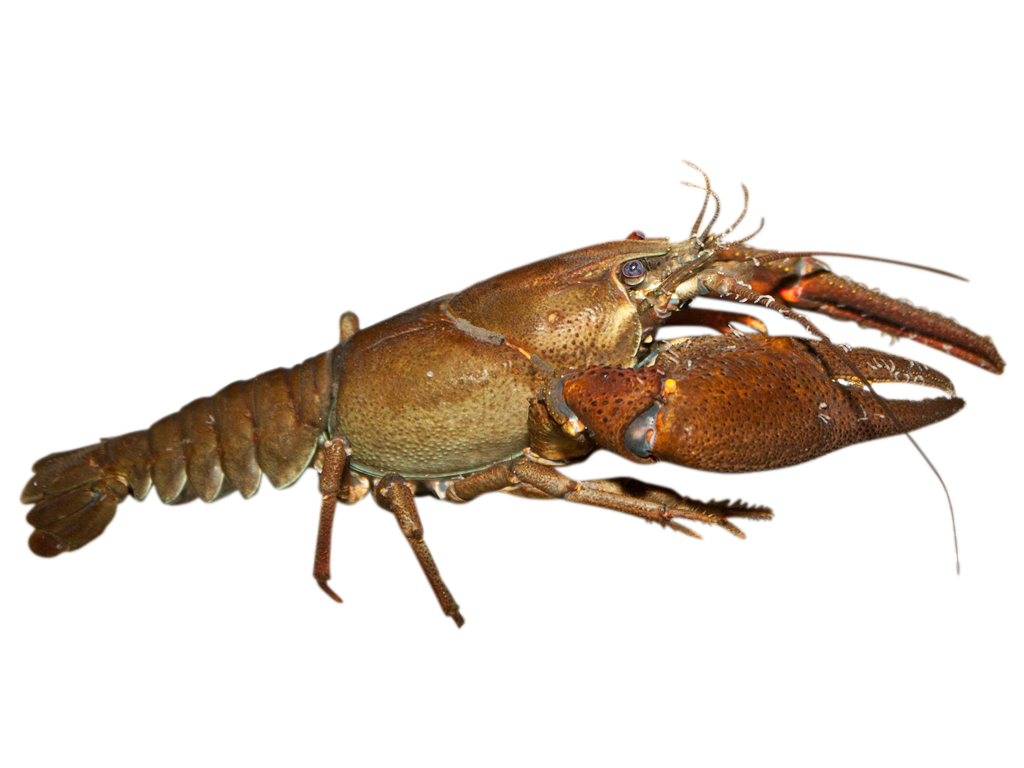European crayfish
Astacus astacus

A threatened crayfish
The European crayfish is almost extinct in Sweden. This is because of a disease called crayfish plague. The plague first arrived in Sweden around 100 years ago, with a cargo of infected crayfish from Finland. In the mid-twentieth century, a North American crayfish species – the signal crayfish – was introduced to many lakes and watercourses in Sweden. People did this because they believed that the signal crayfish would produce better catches than the native European crayfish. What people did not know was that all signal crayfish carry – and are immune to – the crayfish plague. The plague spread rapidly and killed an enormous number of European crayfish.
The claw on a european crayfish, with a small red spot at the thumb.
Photo: Magne-Flåten-CC-BY-SA
Signal crayfish, with its typical white-turquoise spot at the thumb.
Photo: White-Knight-CC-BY-SA
Over the last 100 years, the number of European crayfish in Sweden has decreased by 98 %. There are still people who illegally plant signal crayfish in Sweden because they want to catch crayfish. There are plenty of projects to save the European crayfish. Specimens are bred in small lakes and watercourses to which the signal crayfish has not yet spread.

Photo: Oskar-Kotrle-CC-BY-SA
Active at night
European crayfish live on the bottom of lakes and watercourses. They dig deep burrows in the sand to hide in. They are nocturnal and emerge from their burrows at night to feed. They mate in autumn when the water is cold. After mating, the female carries the eggs under her tail where she keeps them through the winter. When the young hatch in the spring, they look like miniature adult crayfish. They grow by shedding their shell.
Distribution in Sweden

Very rare, inhabits certain small lakes and watercourses in south and mid Norrland.
White marking = Distribution
Threat based on the Red List

Trade regulations
CITES: Not listed.